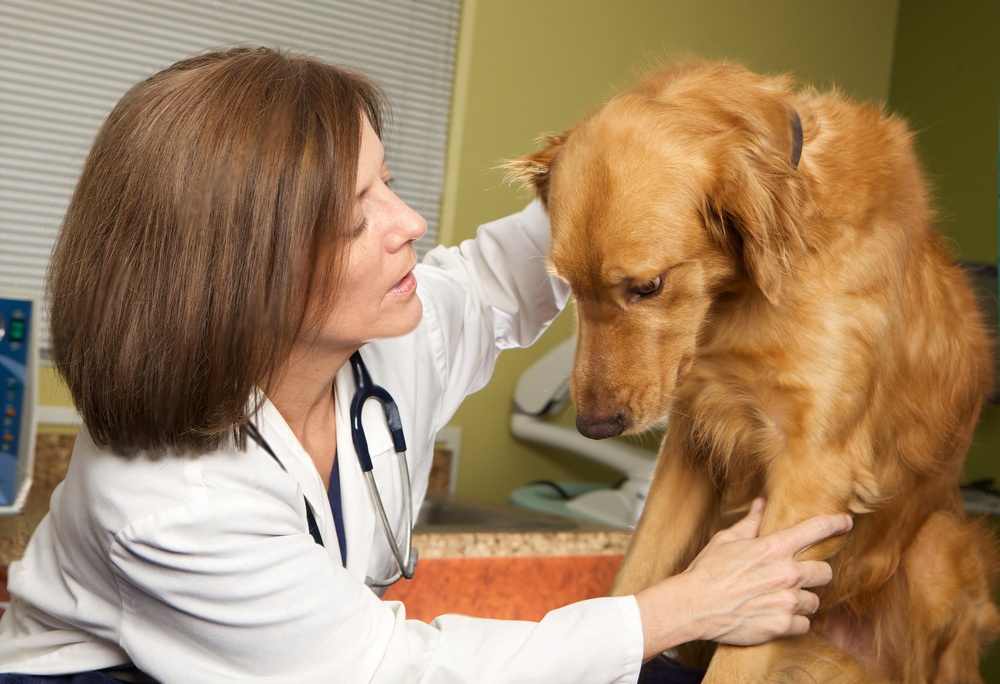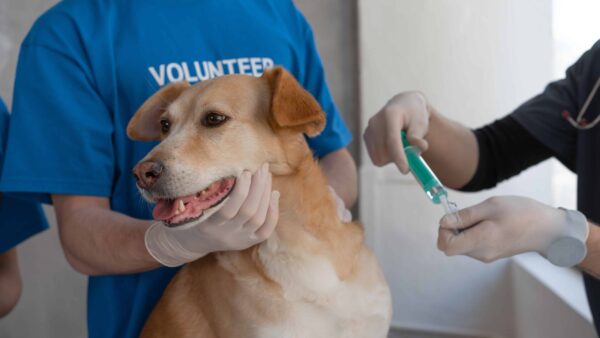As a dedicated pet owner and a specialist in the pet niche, we’ve spent years understanding the subtle and not-so-subtle signs of anxiety in our canine companions.
Anxiety in dogs is as complex and varied as it is in humans, affecting different breeds and individuals in unique ways. Recognizing these signs is crucial, as unchecked anxiety can lead to a variety of behavioral and health issues.
Anxiety in dogs can stem from various causes like fear, separation, and aging. Fear-related anxiety may be triggered by loud noises, strange people or animals, new environments, or specific situations like car rides or vet visits.
Another form of dog’s anxiety is separation anxiety, which is quite common, affecting around 14% of dogs annually in the world. This occurs when dogs are unable to find comfort in the absence of their family members, leading to behaviors like urinating and defecating in the house, destroying furniture, and excessive barking.
Age-related anxiety affects older dogs and is often associated with cognitive decline, leading to confusion and anxiety.
Each form of anxiety has its prevailing symptoms and for a responsible pet owner, it is important to know how to identify signs of anxiety in dogs. Some common symptoms of anxiety in dogs include aggression, urinating or defecating in the house, drooling, panting, destructive behavior, depression, excessive barking, pacing, restlessness, and repetitive or compulsive behaviors.
Anxiety symptoms tend to worsen over time if the issue is not addressed promptly. In this blog post, we have revealed all you need to know about this query “What are the signs of anxiety in family dogs?”. You will also get to learn about the common approaches to solving dog anxiety issues.
Without further ado, let’s proceed!
How to Tell if Your Dog is Anxious

When it comes to identifying anxiety in our canine friends, there are various signs and symptoms to look out for. Understanding these can be crucial in providing the necessary care and support.
Some of the common indicators of anxiety in dogs include:
Destructive Behavior
Dogs experiencing anxiety, especially separation anxiety, often exhibit destructive behaviors around exits and entrances, such as doors and windows. They might scratch, chew windowsills, dig at doors, or even destroy furniture and personal belongings.
Facial Indicators
Dogs are highly expressive, and their facial expressions can be tell-tale signs of anxiety. Anxious dogs pant, drool excessively, yawn as a sign of stress, exhibit excessive nose or lip licking, shake their heads, or avoid direct eye contact. Their ears might droop or be pointed downward, indicating worry or anxiety.
Physical Indicators
Anxiety in dogs can manifest in their overall body language. An anxious dog might lower its head and neck, tuck its tail between its legs, pace restlessly, or exhibit the opposite behavior by becoming immobile or very quiet. They might also display repetitive behaviors and appear hyper-vigilant, easily startled by noises or vibrations.
Inappropriate Urination
Even well-trained dogs may urinate or defecate in inappropriate places when experiencing anxiety. This behavior can be a response to stress rather than a deliberate act of disobedience.
Excessive Vocalization
Dogs with anxiety may vocalize their distress through high-pitched whines, repetitive barking, or howling. This is particularly common in dogs with separation anxiety and usually occurs in the absence of the owner.
Self-Injurious Behavior
In some cases, anxious dogs might inadvertently harm themselves. This could occur while trying to escape or due to excessive grooming to the point of self-mutilation.
Recognizing these signs is the first step in helping your dog. If you notice any of these behaviors, consider consulting with a veterinarian for a proper diagnosis and treatment plan. Treatment can include training strategies like counterconditioning and desensitization, medications, and natural therapies, depending on the severity and underlying cause of the anxiety.
How to Help Dogs with Anxiety

It is important to address dog anxiety promptly, as failure to do this could lead to a worse situation.
Below are the five common and effective ways to help calm your dog’s anxiety:
- Recognize and Remove Anxiety Triggers: Identifying what triggers your dog’s anxiety is crucial. Once these triggers are known, you can work to remove or avoid them. For example, if your dog is anxious around other dogs, you might choose quieter walking routes or times. You may also have to keep your dog away from crowded environs such as parks, stores, or any social gatherings.
- Physical Contact and Reassurance: Contrary to outdated beliefs, comforting an anxious dog can be beneficial. Gentle petting, cuddling, or even a doggy massage can release endorphins and help your dog feel more relaxed and secure. This physical contact helps reassure your dog that they are safe, which can be particularly effective during moments of heightened anxiety.
- Use of Dog-Appeasing Pheromones: Products that emit dog-appealing pheromones can be helpful in calming anxious dogs. These synthetic pheromones are similar to the ones mother dogs release to comfort their puppies. They are available in various forms, including collars, sprays, and diffusers, and can create a sense of safety and calm for your dog.
- Exercise and Mental Stimulation: Regular exercise is not only good for your dog’s physical health but also for their mental well-being. Activities that engage your dog can help reduce levels of fear, aggression, and separation anxiety. Additionally, exercise can serve as a positive outlet for your dog’s nervous energy, making them more relaxed and calmer.
- Creating a Sanctuary Space: Establishing a quiet, comfortable space for your dog can be incredibly beneficial, especially during stressful times like loud events or when visitors are present. This space should be a no-stress zone where your dog can unwind and feel secure. Using white noise or soft music in this area can also help mask anxiety-inducing sounds and further relax your dog.
What Are the Common Medication for Dog Anxiety

Considering medication for a dog with anxiety is typically advised when other interventions like behavioral modification and environmental changes haven’t sufficiently addressed the issue.
Medication can be particularly beneficial for managing severe, chronic, or situational anxiety in dogs, altering the neurochemistry in the brain to minimize anxiety symptoms.
If you are looking forward to treating your dog’s anxiety with medication, below are the three common medications often recommended by veterinarians for treating dog anxiety:
Alprazolam (Xanax®):
This medication is a sedative and tranquilizer from the benzodiazepine class. It’s particularly effective for situational anxiety, like during thunderstorms or other predictable events that may cause panic or fear in dogs. Alprazolam should be administered 30 to 60 minutes before the anxiety-inducing event. Side effects can include drowsiness, increased appetite, and incoordination. It’s important not to stop this medication suddenly if it has been used long-term.
Clomipramine (Clomicalm®)
A tricyclic antidepressant, Clomipramine is FDA-approved for treating separation anxiety in dogs. It can also be prescribed for other anxiety-related behaviors, including fear and stress.
The medication works by affecting levels of serotonin and norepinephrine in the dog’s brain. It’s typically given in capsule or tablet form and can take several weeks to show effectiveness. Side effects may include constipation, dry mouth, vomiting, and difficulty urinating.
Fluoxetine (Prozac®, Reconcile®):
Known commonly as Prozac, Fluoxetine is an SSRI (Selective Serotonin Reuptake Inhibitor) that’s FDA-approved for treating separation anxiety in dogs. It can also be effective for other behavioral issues.
The medication functions by increasing serotonin levels in the brain, which aids in mood regulation and reducing anxiety. It’s available in tablet, capsule, and liquid forms and may take several weeks to take effect. Side effects can include vomiting, diarrhea, lethargy, and changes in appetite.
These three drugs above work so well in easing dog’s anxiety. However, before administering any medication to your dog, it’s crucial to consult with a veterinarian first. They can advise on the best medication for your dog’s specific situation, considering potential side effects and interactions with other medications your dog might be taking.
When Should I See a Veterinarian?
When considering whether to see a vet for your dog’s anxiety, there are a few key factors to keep in mind. It’s crucial to consult a veterinarian if:
- Persistent or Severe Symptoms: If your dog consistently shows signs of anxiety such as aggression, excessive barking, urinating or defecating in the house, pacing, restlessness, or any destructive behavior, it’s important to seek professional help. These symptoms, especially if they occur regularly, indicate a more serious issue that may require professional intervention.
- Sudden Changes in Behavior: If you notice a sudden change in your dog’s behavior that can’t be explained by immediate environmental factors, this could be a sign of an underlying health issue. Changes in appetite, increased lethargy, or unexpected aggression are examples of such changes.
- Failure of Home Remedies: If you’ve tried various home remedies or behavioral training techniques without significant improvement, a vet can offer more targeted advice or treatment options. Sometimes, symptoms of anxiety can be related to underlying medical problems. A veterinarian can conduct a physical examination to rule out any other health issues that might be causing or contributing to your dog’s anxiety.
How do Vets Treat Dog’s Anxiety
In terms of treatment, veterinarians commonly prescribe medications such as Trazodone, Fluoxetine, Alprazolam, and Clomipramine for dogs with anxiety. These medications can help manage your dog’s anxiety more effectively, especially in severe cases or when behavioral therapies alone aren’t sufficient. It’s important to have an open discussion with your vet about the potential benefits and risks of these medications.
In some situations, calming supplements, desensitization, counterconditioning training, and the creation of a safe and comfortable environment at home are also recommended strategies to help manage anxiety in dogs.
Conclusion
What Are the Signs of Anxiety in Family Dogs? As pet owners, it’s our responsibility to ensure our dogs are happy and healthy at all times, and one of the ways we can achieve this is by recognizing the signs and symptoms of anxiety in our dogs.
Some common signs of anxiety in family dogs include destructive behavior, excessive vocalization, inappropriate urination, excessive pacing or panting, etc.
By understanding these signs, we can address the issue of anxiety promptly and also seek professional help when necessary.
This blog post aims to help make a significant difference in the lives of our anxious furry friends, and we guess we’ve successfully achieved that. Remember, a calm and happy dog makes for a happy family.
Before you go, you may also read: Top 7 Natural Remedies for Dog Anxiety







Leave a comment